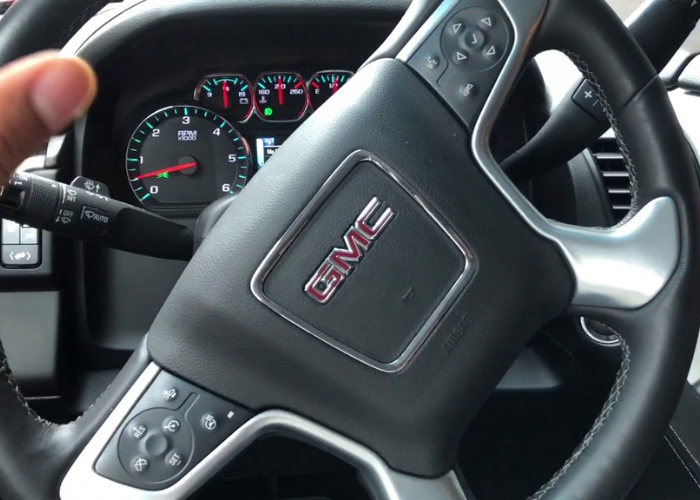Engine idle shutdown is a feature that automatically turns off an engine when it is left inactive for a certain period of time. This feature is designed to help reduce fuel consumption and environmental damage caused by engine idling. Although engine idle shutdown can be a useful feature, it can also be annoying if it is activated too soon. Fortunately, it is possible to disable engine idle shutdown if desired.
What is an Engine Idle Shutdown?
An engine idle shutdown is a feature that is available on many modern vehicles. It is designed to automatically shut down the engine when it is not in use, in order to conserve fuel and reduce emissions. This can be beneficial for both environmental and financial reasons.
In order to disable the engine idle shutdown feature, it is necessary to access the vehicle’s control system. Depending on the make and model of the vehicle, the process can vary slightly. However, the basic steps for disabling the engine idle shutdown are typically similar.
Why Should You Disable Engine Idle Shutdown?
Engine idle shutdown can be a great way to save fuel and reduce emissions, however, it can also be a nuisance. By disabling engine idle shutdown, you can avoid situations where your engine shuts off unexpectedly and you have to restart it.
This can be especially useful if you live in a place where the temperatures fluctuate often. By disabling engine idle shutdown, you will be able to start your car quickly and easily, without any unexpected shutdowns.
Additionally, engine idle shutdown can be a source of unnecessary noise pollution, so disabling it can help keep your neighborhood quieter. Additionally, disabling engine idle shutdown will keep your engine from having to restart each time you come to a stop, which can help protect your engine from wear and tear.
All in all, disabling engine idle shutdown can help improve your car’s performance and help you save money in the long run.
How to Disable Engine Idle Shutdown in Different Models?
Engine idle shutdown is a feature that is designed to turn off your engine when it has been idle for a period of time. This is beneficial for fuel economy and emissions, but it can be inconvenient if you are waiting for someone or something. Fortunately, you can easily disable this feature in most models of vehicles. Depending on the model, you may need to disable the engine idle shutdown in a few different ways.
In newer models, this feature can be disabled by accessing the onboard computer system. This can be done by using a diagnostic tool or smartphone app. Once you have access to the system, you can find the setting that controls the engine idle shutdown and disable it.
In older models, you may need to disable the engine idle shutdown manually. This is typically done by disconnecting the car’s battery, waiting for a few seconds, and then reconnecting it. This will reset the system and disable the engine idle shutdown feature.
For some models, you may need to disable the engine idle shutdown via the car’s fuse box. This can be done by locating the fuse that controls the engine idle shutdown and either removing it or flipping the switch to the off position.
Finally, you may need to consult your owner’s manual for the exact steps to disable the engine idle shutdown in your specific model. This is the best way to ensure that you are doing it correctly and safely.
No matter what model of vehicle you have, you should be able to disable the engine idle shutdown with a few simple steps. Once you have done so, you can rest assured that your engine will keep running while you wait.
When Should You Re-Enable the Engine Idle Shutdown?
When it comes to the question of when to re-enable the Engine Idle Shutdown, the answer is not so straightforward. This is because the engine idle shutdown is designed to reduce fuel consumption and emissions when the vehicle is not in use.
For example, when parking at the store or when stopped at a traffic light, the engine idle shutdown will help reduce emissions and fuel consumption. However, when driving on the highway, the engine idle shutdown may not be necessary and can be disabled to prevent your vehicle from stalling or other issues while driving.
If you are driving in an area with heavy traffic or stop-and-go driving, then you may want to re-enable the engine idle shutdown. This will help reduce fuel consumption and emissions in these types of driving conditions. It is also recommended to re-enable the engine idle shutdown when you plan to be away from the vehicle for a long period of time, such as when parking for an extended period.
It is important to note that when re-enabling the engine idle shutdown, you will need to adjust the idle speed setting. This will ensure that the engine is not running too fast or too slow. You can consult your vehicle’s owner’s manual for more information on how to adjust the idle speed setting.
Overall, the engine idle shutdown is an excellent way to reduce emissions and fuel consumption when the vehicle is not in use. It is important to know when to re-enable the engine idle shutdown, such as when driving in heavy traffic or when parking for an extended period of time. By adjusting the idle speed setting accordingly, you can ensure that your vehicle runs efficiently and safely.
Conclusion
Disabling engine idle shutdown is a relatively easy task that can be done in a few simple steps. Disabling engine idle shutdown can help to ensure more consistent engine performance, as well as reduce the amount of time that the car sits idle.
Additionally, it can prevent the engine from stalling, which can be dangerous. It is important to keep in mind, however, that disabling engine idle shutdown will also require the driver to manually turn off the engine when the car is parked for any length of time. This can be especially important in cold climates, where an engine that is left running for an extended period of time can cause damage to the vehicle.
Related posts
Recent Posts
The Importance of Paint Protection Film for Your Vehicle
When it comes to preserving your vehicle’s pristine condition, one term stands out: Paint Protection Film (PPF). Whether you’re a…
Transform Your Daily Routine: 10 Habits for a Healthier Lifestyle
In our fast-paced world, it’s easy to get caught up in the hustle and bustle, often neglecting our own well-being…



